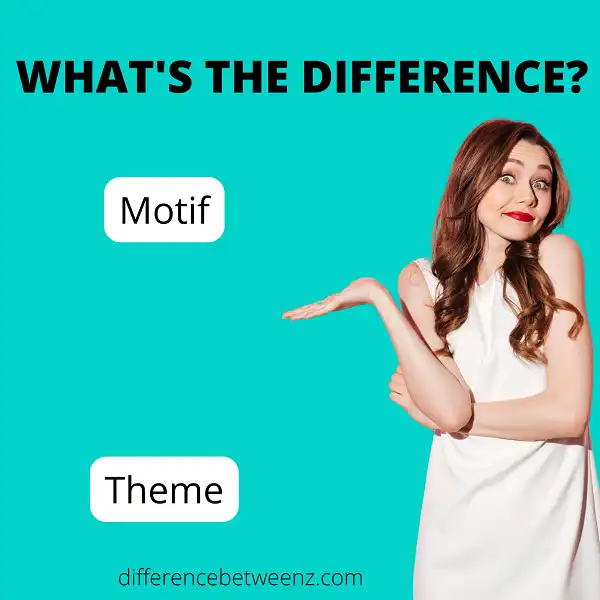What is the difference between a motif and a theme in literature? A lot of people might say that they are one and the same, but there is actually a big distinction between the two. A motif is a recurring idea or image in a story, while a theme is the main idea or message that the author is trying to get across. Let’s take a closer look at each of these concepts.
What is a Motif?
A motif is a recurring theme, object, or symbol in a work of literature. Motifs can be used to develop and support the work’s major themes. For example, if the theme of a novel is ” love conquers all,” a motif might be a couple who consistently overcome obstacles to be together. Motifs can also help to create a more unified, coherent work by reinforcing certain ideas or images. In addition, motifs can be used to set the tone of a work, such as making it more lighthearted or serious. Ultimately, motifs are an important tool that authors use to add depth and richness to their stories.
What is a Theme?
Theme is the central idea or message of a book, story, film, etc. It is often a cooker-cutter statement about life or human nature. The theme of a work is sometimes stated directly by the author or narrator, while other times it is only implied. In order to identify the theme of a work, readers must carefully examine the plot, characters, and setting. Once the theme has been identified, it can be applied to real-life situations in order to gain a better understanding of human nature. Theme is an important element in all forms of art, and it can often be useful in helping us to make sense of our own lives.
Difference between Motif and Theme
A motif is a recurring element in a story that helps to develop the story’s overall theme.
- Motifs can be physical objects, such as a character’s clothing or a particular type of setting.
- They can also be abstract concepts, such as love or betrayal. A theme, on the other hand, is the central idea or message of a story.
- Themes can be broad, such as “good vs. evil,” or more specific, such as “the power of redemption.”
- In some cases, the theme of a story is directly stated by the author. More often, however, it is something that the reader must infer from the events of the story.
Motifs and themes are closely related, but it is important to remember that a motif is a recurring element within the story, while a theme is the larger idea that the story is trying to convey.
Conclusion
In order to better understand the difference between motif and theme, let’s take a look at an example. If you were to read a book about a young girl who is traveling around the world, the motif would be travel while the themes might include independence, adventure, and culture. The different aspects of the girl’s journey would be explored through these themes. As you can see, motifs are often more specific than themes and can help give your writing greater depth.


